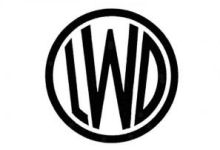

This page lists brand names beginning with the letter "L" for which we currently have only an historical precis. See also the List of German Motorcycles.
Laro 1947-1951
LDR
Manufactured 1922-1925
Josef Herz designed 548cc sv external-flywheel engines which were housed in a frame with a comparatively low saddle. Early models were belt drive, later machines had chain/chain drive but with little protection for the rider.
Source: Tragatsch p192
Lebelt
Operating from 1924 to 1925, the firm built motorcycles fitted with 3.8 hp two-stroke and 4.6 hp sidevalve engines of their own production.
Source: Tragatsch p192
Lehner 1923-25, engines
Leifa
Lightweights of 148cc believed to have been built by Fama of Kiel-Friedrichsort in 1924-1925. Not related to the Berlin automobile company of the same name and period.
Sources: Tragatsch p192, Wikipedia DE.
Leopard 1921-1926
Lesshaft 1925-1926
Leto
Lehmann designed a welded pressed metal frame with integral fuel tank into which he fitted Rinne two-stroke engines of 173 and 198cc. These were produced from 1926 to 1928
Source: Tragatsch p193
LFG
Manufactured by Luftfahrzeug GmbH of Berlin, famed manufacturer of airships and aircraft, including WWI fighter planes.
After the Great War, Germany was banned from producing aircraft so the company turned to other avenues, producing the LFG motorcycles from 1921 to 1925. These had the engine mounted well to the rear, below the saddle, and were referred to as Schieberad, "pushing wheel".
They also produced a 305cc two-stroke with a body shaped like an airship.
Source: GTU Oldtimerservice, Tragatsch p194.
Liliput
1923-26
Built a variety of lightweight motorcycles using engines from DKW, Namapo, Baumi, Gruhn and probably others.
Source: Tragatsch p194
Lindcar 1930s
Linsner
Between 1922 to 1924 the firm built motorcycles powered by flat-twins of 293cc from Bosch-Douglas and 492cc from BMW.
Source: Tragatsch p194
LMS see Tropfen
Lohrlein
1980
An off-road racer built by Peter Lohrlein, the machine had a monocoque frame and unusual swinging arm front suspension.
The wheels were of pressed metal, and it was powered by a modified Sachs 175cc engine.
Source: wikipedia.nl.
Lord
Constructed from 1929 to 1931 using a 198cc JAP sidevalve engine. The reason of the English name is obscure.
Source: Tragatsch p196
Lorenz, aka Rapid
Löwy
1920s
Czech engineer Julius Löwy designed and built two-stroke twins of 113, 142 and 176cc which were supplied to Albertus and Almora.
Source: wikipedia.nl.
Lucas
In 1923-24 the firm built lightweights fitted with Bekamo 129cc two-strokes, and later with engines of their own construction.
Source: Tragatsch p196
Ludolph
From 1924 to 1926 they constructed basic motorcycles using 247cc and 299cc two-stroke engines of their own manufacture fitted to conventional frames.
Source: Tragatsch p196
Lupus
Lupus Motorenbau, Stuttgart, Landhausstraße 43
Manufactured for Rudolf Wolf & Co. of Berlin, 1923-1926
The 148 cc two-stroke motorcycle used a Douglas 2-speed gearbox driving the rear wheel via belt.
Source: GTU Oldtimerservice, wirtemberg.de
Lutrau 1924-1933
Lutzmann
Manufactured by Anhaltische Motorwagenfabrik in Dessau.
Prior to establishing his company two years later, Friedrich Lutzmann built his first Dreirad in 1893. The tricycle had a single wheel at the rear which controlled the steering, and the power was delivered to the front axle via a 1.5 hp four-stroke engine.
Subsequent models produced after the company was formed were four-wheelers until 1898 when Lutzmann closed up shop and joined Opel, who bought his factory and put his name on their first machine.
Sources: Oldtimerclub Lachendorf, et al
LWD

Manufactured by Lippische Werke AG, Detmold, 1923-1924
The firm built railway carriages, agricultural machinery and much more. The LWD motorcycle appeared with 195cc and 250cc four-stroke SV engines, but the marque did not survive the economic crisis.
Sources: GTU Oldtimerservice, Tragatsch p196.
Rarer German Marques